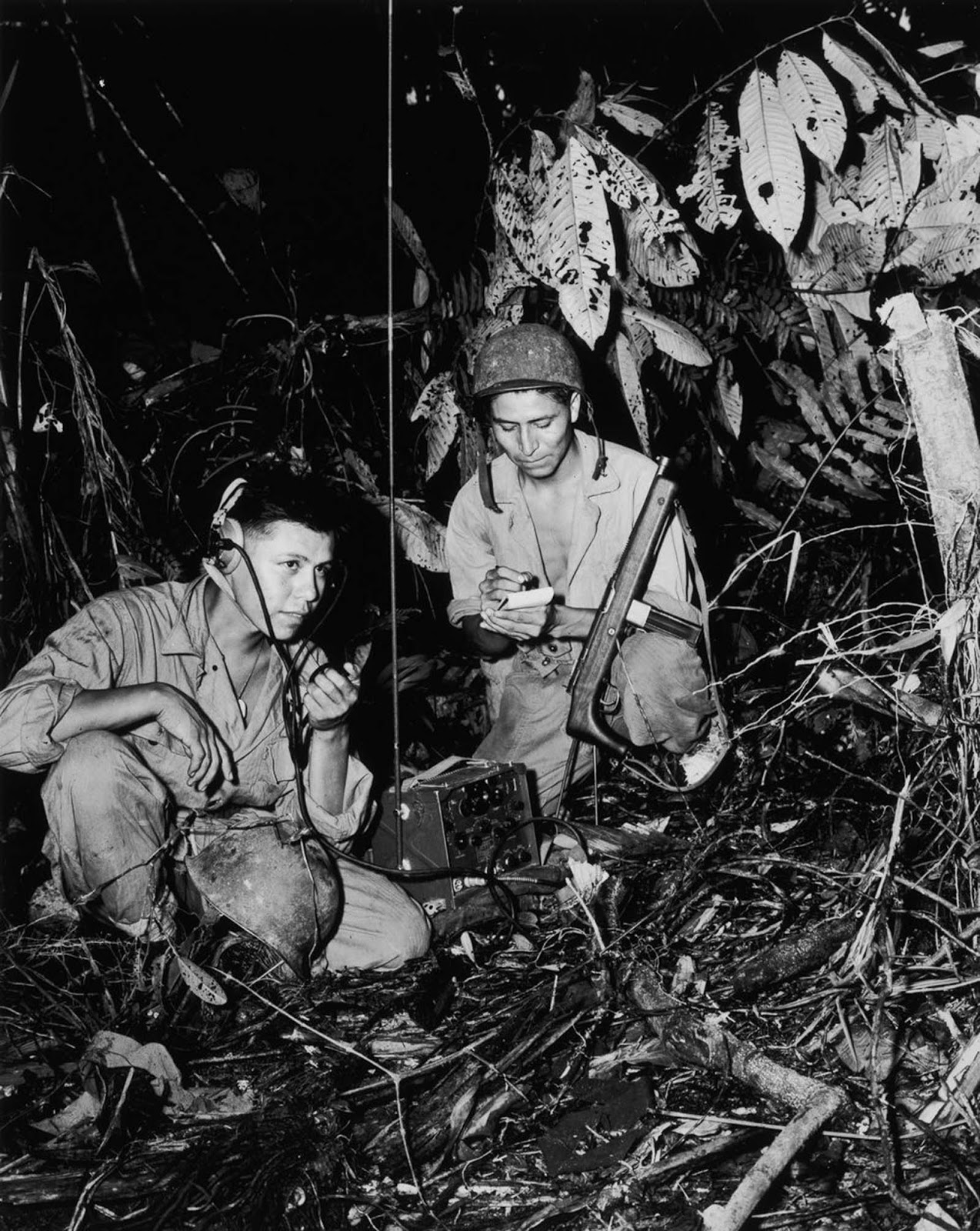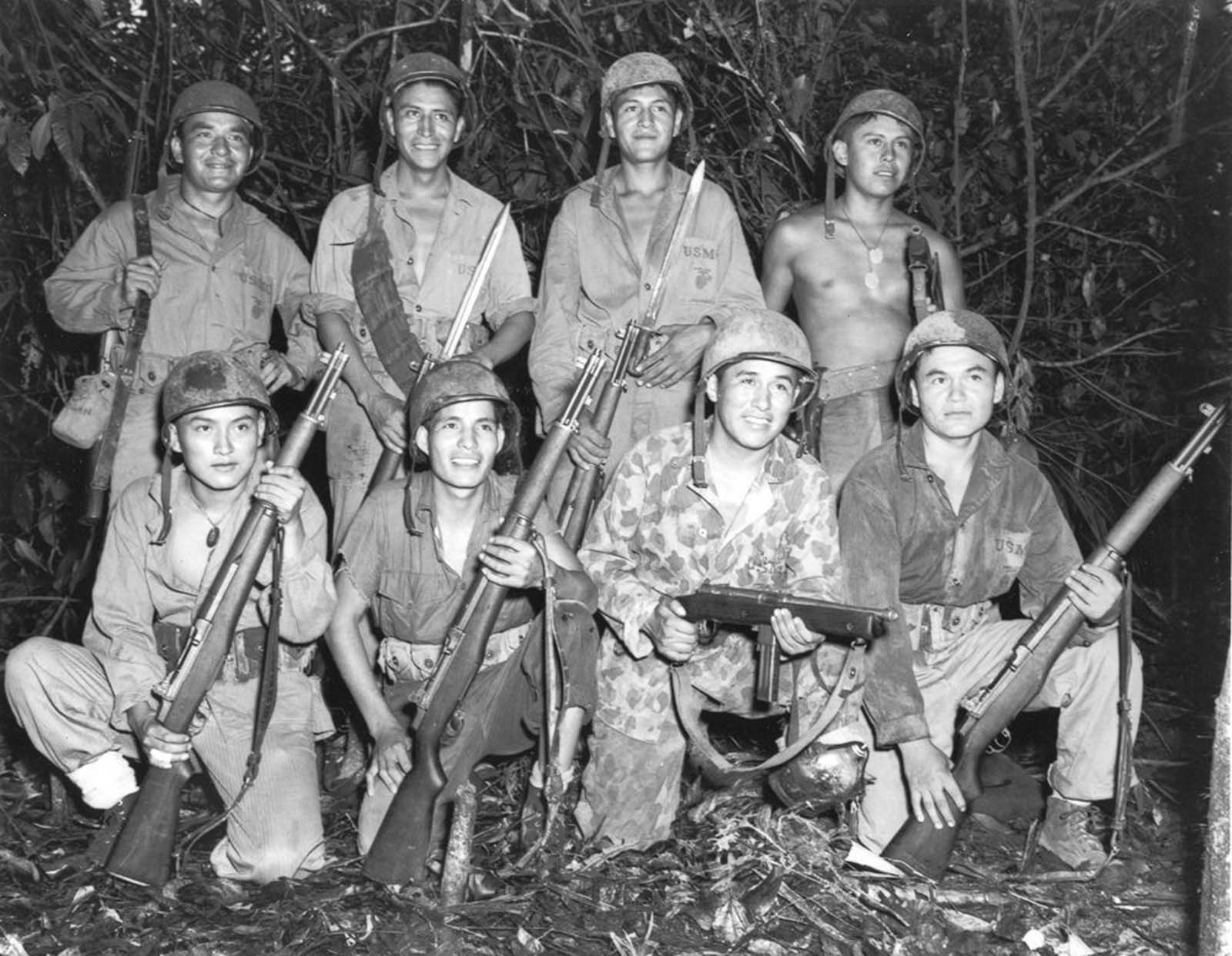
Every war combatant highly appreciated the need for an unbreakable code that would help them communicate while protecting their operational plans.
The U.S. Army knew where to find one: the Navajo Nation. Philip Johnston, a civil engineer for the city of Los Angeles, proposed the use of the Navajo language to the United States Marine Corps at the beginning of World War II.
Johnston, a World War I veteran, was raised on the Navajo reservation as the son of a missionary to the Navajo and was one of the small number of non-Navajo who spoke the language fluently.

The first 29 Navajo code talker recruits are sworn in at Camp Wingate, New Mexico.
This idea was not without precedent. Cherokee and Choctaw soldiers had both effectively used their native languages to send coded messages on the Western Front during the final months of World War I.
The Corps accepted Johnston’s proposal, and recommended the immediate recruitment of 200 Navajos to develop a code.
Marine Corps leadership selected 29 Navajo men, the Navajo Code Talkers, who created a code based on the complex, unwritten Navajo language.

A memorandum from Marine Corps Major General Clayton B. Vogel recommending the enlistment of 200 Navajo code talkers.
The code primarily used word association by assigning a Navajo word to key phrases and military tactics.
This system enabled the Code Talkers to translate three lines of English in 20 seconds, not 30 minutes as was common with existing code-breaking machines.
The Code Talkers participated in every major Marine operation in the Pacific theater, giving the Marines a critical advantage throughout the war.

Code talkers transmit messages during the Battle of Bougainville. 1943.
During the nearly month-long battle for Iwo Jima, for example, six Navajo Code Talker Marines successfully transmitted more than 800 messages without error. Marine leadership noted after the battle that the Code Talkers were critical to the victory at Iwo Jima.
As the war went on, some 400 Navajos were recruited and trained in the code. Even when the Japanese managed to capture and torture Navajo Sergeant Joe Kieyoomia, they couldn’t crack it — though he spoke Navajo, he hadn’t been trained in the code, so the encrypted messages read as an indecipherable mess of words.

Carl Nelson Gorman, one of the original 29 Navajo code talkers, tracks enemy movements on Saipan. 1944.
Code talkers from more than a dozen other tribes such as the Seminole, Comanche, and Meskwaki were also deployed as code talkers in more limited numbers in Europe and North Africa.
Many of the code talkers returned home from the war to face discrimination, hardship, and the lingering trauma of combat.
They were not even allowed to speak about the invaluable role they played until the code operation was declassified in 1968. In 2001, the original 29 creators of the Navajo code were honored with the Congressional Gold Medal.

A two-man team of code talkers attached to a Marine regiment relay coded orders over a field radio.

Corporal Oscar Ithma, Private First Class Jack Nez, and Private First Class Carl Gorman on Saipan.

Chester Nez, one of the original 29 Navajo code talkers.

Code talkers with a Marine signal unit on Bougainville. Front row, left to right: Privates Earl Johnny, Kee Etsicitty, John V. Goodluck, and Private First Class David Jordan. Back row: Privates Jack C. Morgan, George H. Kirk, Tom H. Jones, and Corporal Henry Bake, Jr. December, 1943.
(Photo credit: National Archives / United States Marine Corps).